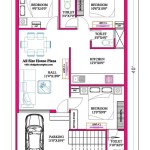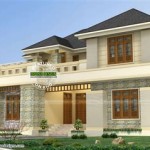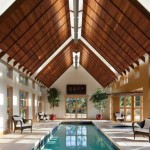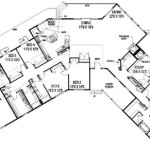Passive Solar House Plans for Cold Climates
Designing passive solar homes for cold climates requires careful planning and the incorporation of specific features to harness the sun's energy and mitigate winter heat loss. These homes utilize passive solar design principles to create comfortable indoor temperatures with minimal reliance on energy-intensive heating systems.
Here are the key considerations for passive solar house plans in cold climates:
1. Maximum Solar Exposure
Orient the home to face south, which allows for maximum solar gain throughout the day. Position the largest windows, such as floor-to-ceiling windows or sliding glass doors, on the south side to capture the sun's heat.
2. Thermal Mass
Incorporate thermal mass materials, such as concrete, stone, or brick, into the building envelope. These materials absorb and store solar heat during the day and release it into the home at night, providing a natural source of warmth.
3. Insulation and Air Sealing
Ensure that the home is well-insulated throughout the walls, roof, and floor. Air sealing measures, such as caulking and weatherstripping, minimize air leaks that could result in heat loss.
4. Overhangs and Shading
Design overhangs and shading elements to control solar gain during different seasons. Overhangs block the summer sun from overheating the home and allow the low winter sun to penetrate.
5. Passive Solar Features
Incorporate passive solar features, such as sunspaces, solar chimneys, and trombe walls. Sunspace designs allow the sun's energy to heat up an enclosed area that can then be connected to the main living space. Solar chimneys use the greenhouse effect to create a stack effect, drawing warm air up and out of the home, and trombe walls absorb and release heat to provide passive warming.
6. Energy Efficiency
Implement energy-efficient measures, such as energy-star appliances, LED lighting, and low-flow plumbing fixtures. Combining passive solar design with energy efficiency maximizes comfort while reducing operating costs.
Benefits of Passive Solar House Plans for Cold Climates
Passive solar house plans in cold climates offer numerous benefits, including:
- Reduced Heating Costs: The incorporation of passive solar features and energy efficiency measures can significantly reduce heating costs, leading to long-term savings.
- Improved Comfort: Passive solar homes maintain a more comfortable indoor temperature, eliminating drafts and cold spots often found in conventional homes.
- Environmental Advantages: Passive solar homes reduce the reliance on fossil fuels, contributing to a greener and more sustainable living environment.
- Resilience: Passive solar homes provide a degree of resilience against power outages or grid failures, as they can maintain a habitable temperature to some extent with sunlight.
By carefully considering the factors discussed above, architects and homeowners can design passive solar house plans that effectively harness the sun's energy and create comfortable and sustainable homes in cold climates.

Passive Design Strategies For Cold Climate

Passive Solar House Design Ecoliv

The Next Generation Of Passive Solar For Cold Climates Construction

Passive Solar House Design

Passive Solar House Design Homes Kept Warm By The Sun Ecohome

Using Thermal Mass In Passive Solar Design Cold Climate Housing Research Center

Does Passive Solar Design Actually Save Energy Fine Homebuilding

Passive House Design Comes Of Age Greenbuildingadvisor

Passive Solar House Design Bellingen Permaculture

Passive Solar Studio House Plan 1310 Affordable Adobe Houseplans








